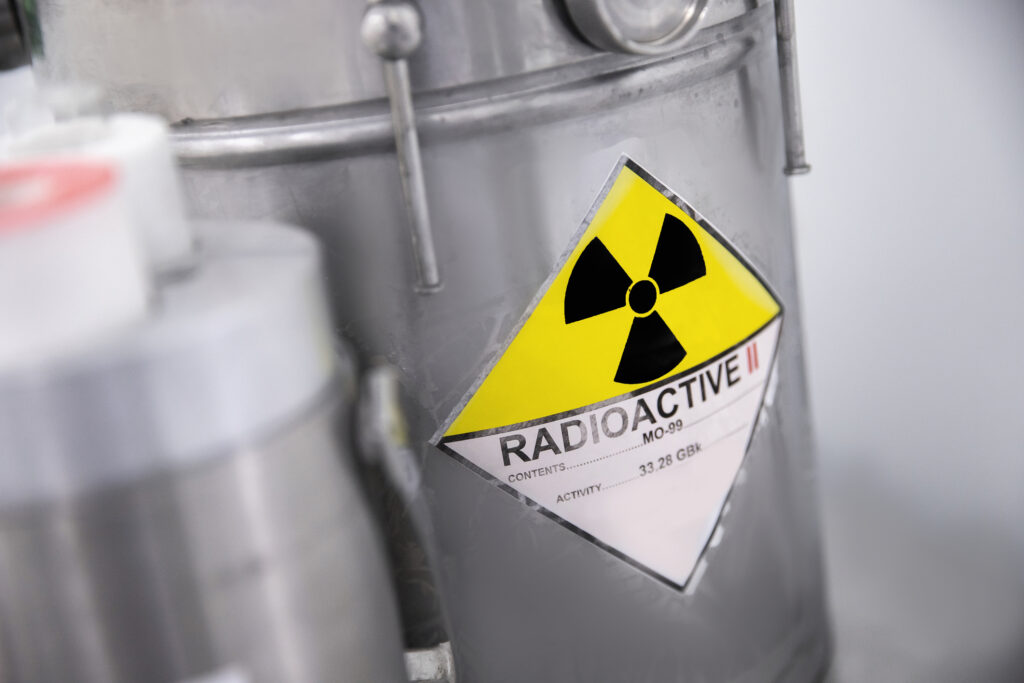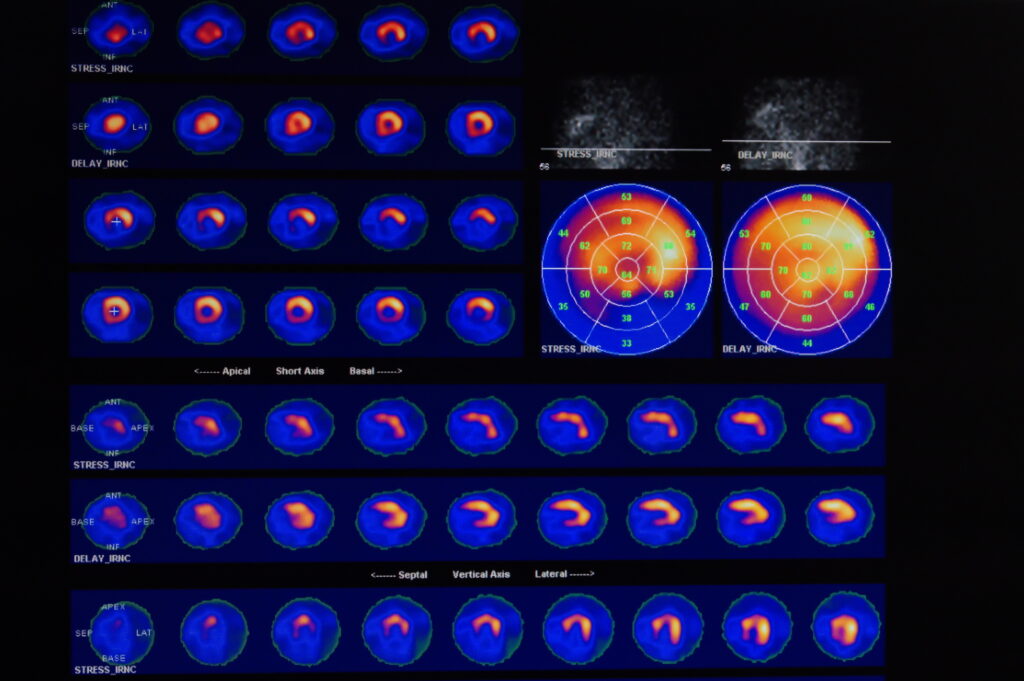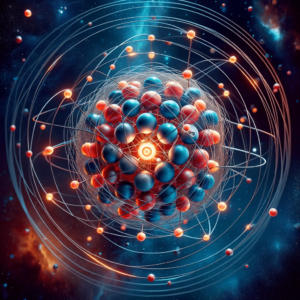Copper radiopharmaceuticals revolutionise nuclear medicine with advanced diagnostic and therapeutic applications, particularly in oncology and cardiology.
Introduction to Copper Radiopharmaceuticals
Copper radiopharmaceuticals represent a fascinating and rapidly evolving area in the field of nuclear medicine, leveraging the unique properties of copper isotopes in diagnostic imaging and therapeutic applications.
Copper, a transition metal, has emerged as a critical element in nuclear medicine due to its isotopic diversity and the unique properties of each isotope. The isotopes Copper-64 (Cu-64), Copper-67 (Cu-67), and Copper-61 (Cu-61) are particularly significant for their applications in medical diagnostics and treatment.
Cu-64 (half-life 12.7 hours) is a versatile isotope exhibiting beta-plus and beta-minus decay. This dual functionality makes it exceptionally useful in a variety of medical applications. In diagnostic imaging, particularly in positron emission tomography (PET), Cu-64 is employed for its beta-plus decay. This property allows for high-resolution imaging, enabling clinicians to visualise and diagnose various conditions accurately, especially in oncology, where precise tumour localisation is critical.
Simultaneously, Cu-64 beta-minus decay is exploited in therapeutic applications. It allows for targeted radiation therapy, where the isotope delivers beta radiation directly to cancer cells, minimising damage to surrounding healthy tissues. This dual-use capability positions Cu-64 as a cornerstone in theranostics, a field that combines therapy and diagnostics.
Cu-67 (half-life 61.83 hours), primarily known for its therapeutic applications, emits beta radiation. This makes it particularly valuable in targeted radiotherapy. Attaching Cu-67 to molecules that specifically target cancer cells can deliver localised radiation therapy, providing a focused treatment approach that limits the impact on healthy cells. This targeted delivery is crucial in reducing side effects generally associated with radiation therapy and improving patient outcomes.
On the other hand, Cu-61 (half-life 3.33 hours), with its positron-emitting capability, is mainly utilised in PET imaging. Its shorter half-life compared to Cu-64 makes it well-suited for procedures where rapid imaging is beneficial. This property is valuable in cardiology for myocardial perfusion imaging, where it aids in the assessment of heart muscle health and blood flow.
The distinct physical properties of these copper isotopes – Cu-64 versatility in both imaging and therapy, Cu-67 targeted therapeutic applications, and Cu-61 role in fast-paced diagnostic imaging – underscore the significant potential of copper in advancing nuclear medicine. Their diverse applications enhance diagnostic accuracy and open new avenues for personalised and effective treatment strategies, illustrating the transformative impact of copper isotopes in medical science.
Synthesis and Radiolabelling
The production and utilisation of copper isotopes, particularly in nuclear medicine, is a complex and technologically advanced process. Copper isotopes such as Cu-64, Cu-67, and Cu-61 are typically produced in cyclotrons or nuclear reactors, employing sophisticated techniques to create these medically valuable substances.
Cyclotrons play a crucial role in the production of Cu-64. The process begins by bombarding a stable nickel target with high-energy protons. A nuclear reaction occurs during this bombardment, transforming some of the nickel nuclei into Cu-64. This isotope is then chemically separated from the target material, producing a pure form of Cu-64, ready for medical use. The process demands precision and control, as the exact energy of the protons and the duration of bombardment must be carefully managed to optimise yield and purity.
Once produced, the next critical step is radiolabelling. This involves attaching the copper isotope to a molecule that specifically targets cells or receptors in the body. For instance, in cancer treatment, the molecule might be designed to bind to cancer cells, allowing the radioactive copper to be delivered directly to the tumour site. This targeted approach is fundamental in reducing the impact on healthy tissues and increasing the efficacy of the treatment.
Chelating agents, such as DOTA (1,4,7,10-tetraazacyclododecane-N,N‘,N”,N”’-tetraacetic acid) or TETA (triethylenetetramine), are often used in the radiolabelling process. These agents form a stable complex with the copper isotope, ensuring that the radioactive atom remains securely attached to the targeting molecule until it reaches the desired location in the body. The stability of this complex is critical, as it must survive the journey through the bloodstream without releasing the radioactive copper, which could otherwise cause unintended radiation exposure to healthy tissues.
The production of copper isotopes and their subsequent incorporation into targeted molecules for medical applications is a prime example of the intersection between advanced nuclear physics and medical science. It showcases how cutting-edge technology and sophisticated chemical processes can be harnessed to produce highly specific and effective medical treatments, opening new frontiers in diagnosing and treating various diseases, particularly in oncology and cardiology.
Clinical Applications
Diagnostic imaging and therapeutic applications are two crucial areas where copper isotopes, particularly Cu-64, Cu-61, and Cu-67, have significantly impacted the field of nuclear medicine. These isotopes have distinct characteristics that make them highly effective in specific medical contexts.
In diagnostic imaging, Cu-64 labelled compounds, such as Cu-64 DOTATATE, are increasingly used for PET (positron emission tomography) imaging in the management of neuroendocrine tumours. Cu-64 DOTATATE binds to somatostatin receptors, which are often overexpressed in these tumours. It allows for high-resolution imaging and precise tumour localisation when administered to patients. This precision is pivotal in developing an effective treatment plan, as it enables clinicians to determine the extent of the disease and monitor response to therapy. The use of Cu-64 in PET imaging exemplifies how nuclear medicine can offer detailed insights into tumour biology, aiding in more accurate diagnoses and better patient outcomes.
Cu-61, with its shorter half-life and positron emission capabilities, is particularly suited for cardiac PET imaging. In cardiology, assessing myocardial perfusion — the flow of blood to the heart muscle — is vital for diagnosing various heart conditions, including coronary artery disease. Cu-61’s properties allow for rapid imaging, providing essential blood flow and heart function data. This information is crucial in diagnosing heart diseases, planning treatments, and evaluating the effectiveness of therapeutic interventions.
On the therapeutic front, Cu-67 beta radiation properties are employed in targeted radiotherapy. For instance, in treating cancers such as non-Hodgkin lymphoma, Cu-67 can be attached to antibodies that specifically target lymphoma cells. This targeted approach ensures that the radiation is delivered directly to the tumour cells, maximising the therapeutic effect while minimising collateral damage to surrounding healthy tissues. The use of Cu-67 in such targeted therapies represents a significant advancement in cancer treatment, offering a more focused and potentially less harmful alternative to conventional radiation therapy.
The utilisation of copper isotopes in diagnostic and therapeutic applications underlines the versatility and effectiveness of nuclear medicine techniques. By harnessing the unique properties of these isotopes, medical professionals can achieve more accurate diagnoses and more effective, personalised treatments, ultimately improving patient care and outcomes in oncology and cardiology.
Advantages and Limitations
Copper radiopharmaceuticals, with their unique properties and applications, have emerged as a significant advancement in the field of nuclear medicine. These compounds offer several key advantages but also face certain limitations that influence their clinical use.
Advantages
- Versatility: The range of copper isotopes – Cu-64, Cu-67, and Cu-61 – provides a wide array of applications, catering to both diagnostic and therapeutic needs. Cu-64, for instance, serves dual purposes in PET imaging and targeted radiation therapy, while Cu-67 is primarily used for therapeutic radiation delivery, and Cu-61 excels in PET imaging, particularly for cardiac assessments. This versatility enables a more comprehensive approach to patient care, allowing for both accurate diagnosis and effective treatment using the same elemental base.
- High-Resolution Imaging: In PET imaging, copper compounds like Cu-64 DOTATATE are known for providing clear, high-resolution images. This clarity is crucial in accurately detecting and localising tumours, particularly in complex cases like neuroendocrine tumours. High-resolution imaging directly impacts treatment planning and outcomes, offering a detailed view of the disease process.
- Targeted Therapy: The ability to deliver radiation directly to cancer cells is perhaps one of the most significant advantages of copper radiopharmaceuticals. Targeted therapy minimises the collateral damage to healthy tissues, a common issue with traditional radiation therapies. This specificity not only enhances the efficacy of the treatment but also reduces the side effects, improving the patient’s quality of life during and after treatment.
Limitations
- Availability: The production of copper isotopes is not a straightforward process; it requires specialised facilities like cyclotrons or nuclear reactors. This requirement can limit the availability of these compounds, making them inaccessible in areas without such facilities.
- Stability: Ensuring the stability of radiolabeled copper compounds is vital for both safety and efficacy. Unstable compounds can release the isotope prematurely, leading to unwanted radiation exposure and reduced effectiveness in targeting disease sites.
- Regulatory Hurdles: Copper radiopharmaceuticals, like all radiopharmaceuticals, are subject to stringent regulatory controls. Gaining approval for clinical use involves rigorous testing and validation to ensure safety and efficacy. These regulatory processes can be time-consuming and costly, potentially slowing down the availability of new treatments to patients.
Research and Development
Ongoing research in copper radiopharmaceuticals is intensely focused on enhancing these compounds’ specificity, stability, and therapeutic efficacy. The goal is to create targeted treatments that are more effective and safer, with minimal side effects. This pursuit involves developing new copper-based compounds that can precisely target disease sites, particularly cancer cells while ensuring that these compounds remain stable throughout their journey in the body.
The specificity of copper radiopharmaceuticals is paramount. By increasing the precision with which these compounds target diseased cells, researchers aim to maximise the therapeutic impact while minimising collateral damage to healthy tissues. This targeted approach is especially crucial in cancer treatment, where traditional therapies often have significant side effects due to their lack of selectivity.
Stability is another critical area of focus. Stable compounds ensure that the radioactive copper isotope remains bound to the targeting molecule until it reaches the intended site. This stability is vital for the treatment’s safety and efficacy, as it reduces the risk of radiation exposure to non-targeted areas.
Clinical trials play a pivotal role in this research. They are crucial for establishing the safety and efficacy of new copper radiopharmaceuticals and determining optimal dosing protocols. Through these trials, researchers can assess the real-world impacts of these compounds, including their effectiveness in treating diseases and their side effect profiles. This information is invaluable for guiding future developments and for securing regulatory approvals, ultimately leading to the availability of more advanced and effective treatments for patients.
This ongoing research and development in copper radiopharmaceuticals illustrates a commitment to advancing nuclear medicine and improving patient outcomes through innovative and targeted therapies.
Future Prospects
The future of copper radiopharmaceuticals holds immense promise, with the potential to revolutionise treatment protocols across various types of cancers and diseases. As research continues to evolve, these compounds are expected to extend their applications beyond the current scope, offering new avenues for diagnosis and therapy in the medical field.
Advancements in technology and radiolabelling techniques are central to this evolution. These developments aim to enhance the efficacy of copper radiopharmaceuticals, ensuring that they are more effective in targeting disease sites and safer for patients. The refinement of radiolabelling methods is particularly crucial. By improving how copper isotopes are attached to targeting molecules, researchers can increase the stability and specificity of these compounds. This enhancement means that the radiopharmaceuticals will be better able to target diseased cells without affecting healthy tissues, thereby reducing side effects and increasing treatment efficacy.
The expanding applications of copper radiopharmaceuticals in treating a more comprehensive range of cancers and other diseases signify a significant step forward in personalised medicine. By tailoring treatments to target specific types of cells, these compounds offer a more customised approach to therapy, potentially improving outcomes for patients with various conditions.
The advancements in copper radiopharmaceuticals are set to open new horizons in medical treatment. With ongoing research and technological improvements, these compounds are poised to offer more effective, safer, and more targeted therapeutic options, marking a significant milestone in the journey towards advanced, personalised healthcare solutions.
Conclusion
Copper radiopharmaceuticals stand out as a potent and innovative tool in nuclear medicine, providing dual benefits in both diagnostics and therapy. These compounds, harnessing the unique properties of copper isotopes like Cu-64, Cu-67, and Cu-61, have opened new possibilities in medical imaging and targeted treatments, especially in the field of oncology. The diagnostic capabilities of these isotopes, particularly evident in PET imaging, offer high-resolution insights into disease processes, facilitating accurate diagnosis and monitoring. Therapeutically, copper radiopharmaceuticals enable targeted treatment approaches, delivering radiation directly to cancer cells, thereby minimising harm to healthy tissues and reducing side effects.
Despite their potential, challenges such as production complexities, stability concerns, and regulatory hurdles persist. However, ongoing research and technological advancements are progressively overcoming these obstacles. By enhancing these compounds’ specificity, stability, and safety, the scope of their clinical applications continues to broaden. This evolution in copper radiopharmaceuticals is not just refining current treatment paradigms but is also set to revolutionise disease management, particularly in oncology, paving the way for more effective, personalised, and safer treatment options in the future.
A list of some notable copper radiopharmaceuticals, along with their primary applications in nuclear medicine:
Cu-64 DOTATATE: Used in PET imaging for neuroendocrine tumours. It binds to somatostatin receptors on tumour cells, providing high-resolution images for accurate tumour localisation and assessment.
Cu-64 CuCl2: Primarily used in PET imaging to evaluate copper metabolism in various diseases, including Wilson’s disease and certain types of cancers.
Cu-64 NODAGA-E-[c(RGDyK)]2: Targeted for PET imaging in angiogenesis, particularly in identifying and monitoring the progression of tumours based on their angiogenic activity.
Cu-64 PTSM (Pyruvaldehyde-bis(N4-methylthiosemicarbazone)): Employed in brain perfusion studies and hypoxia imaging in tumours, providing valuable information about the tumour microenvironment.
Cu-67 SARTATE: Used for targeted radiotherapy in neuroendocrine tumours. It combines diagnostic and therapeutic capabilities, allowing for theranostic application in neuroendocrine tumour management.
Cu-67 ATSM: Explored for its potential in targeted radiotherapy of hypoxic tumours. It selectively targets hypoxic cells in the tumour environment, which are often resistant to conventional therapies.
Cu-61: Mainly used in cardiac PET imaging. Its short half-life and positron emission make it ideal for myocardial perfusion imaging, aiding in the assessment of coronary artery disease and other cardiac conditions.
Each of these copper radiopharmaceuticals is tailored for specific uses, leveraging the unique properties of copper isotopes to address distinct diagnostic and therapeutic needs in nuclear medicine. Their development and application represent a significant advancement in the field, offering more precise and targeted approaches in disease management, especially in oncology and cardiology.
The most notable FDA-approved copper radiopharmaceutical is:
Cu-64 dotatate (Copper Cu 64 dotatate injection)
Brand Name: Detectnet™
Approval Date: September 2020
Application: This radiopharmaceutical is used for PET imaging of somatostatin receptor-positive neuroendocrine tumours (NETs) in adult
It’s important to note that the landscape of FDA approvals is continually evolving. New radiopharmaceuticals are frequently under research and development, and some may be in the process of clinical trials or awaiting FDA review. Therefore, consulting the FDA’s official website or other reliable medical resources is advisable for the most current information on FDA-approved copper radiopharmaceuticals.
Disclaimer
The information presented in this article is intended for general educational and informational purposes only. Open Medscience does not provide medical, scientific, or regulatory advice and makes no claims regarding the safety, efficacy, or suitability of any copper-based radiopharmaceuticals mentioned herein for clinical use.
This content is based on publicly available data and ongoing research as of the publication date (11 November 2023). Medical practices, clinical guidelines, and regulatory approvals may change over time, and newer developments may render some information outdated. Readers are strongly advised to consult qualified healthcare professionals, regulatory bodies, or original research publications for guidance before making any clinical or research decisions related to copper radiopharmaceuticals.
References to specific isotopes, compounds, or FDA approvals do not constitute endorsements or guarantees of performance. Inclusion of a product or process does not imply that it is approved for use in any jurisdiction, or that it is safe or effective for any particular patient or condition.
Neither the authors nor Open Medscience assume any liability for the accuracy, completeness, or use of the information provided. Reliance on this content is at the reader’s own risk.
You are here: home » diagnostic medical imaging blog »



